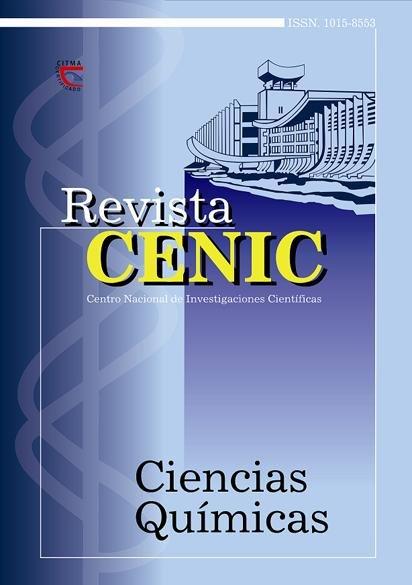Zephyramine. Isolated novel alkaloid from the bulbs of Zephyrantes citrina Baker
Abstract
Many plant species of the Amaryllidaceae family are used as popular medicine in the treatment of different diseases, specially as a citotoxic. Among them, several species of Zkphyrantes are used in various regions of the world. Author's research group has found in vitro cytotoxic activity in KB cells in the alcoholic extracts obtained from the bulbs of the Zephyrantes citrina Baker, collected in Caibarien, Cuba. This motivated its phytochemical study. In the present paper we report the separation and structural determination of five alkaloids isolated from this plant. The alkaloids licorine y haemanthamine (common in plants of theAmaryllidaceae family) were identified through their physical constants. spectroscopic analysis and the comparison with an authentic sample. The structure of cavinine (for the first time in the genus) was established by its physical contants and spectroscopic analysis (IR, MS and 'H-NMR). Jouberthiamine was identified by its physical constants and spectroscopic data (IR, MS); this compound belongs to the alkaloids of the Mesembrane and it is the fourth time that an alkaloid of this group is isolated in Amaryllidaceae. The structure of the new alkaloid zephyramine was established through its physical constants and spectroscopic analysis (IR, MS, 'H-NMR and uCNMR); it belongs to the ermine series without the hydroxy substituent in the ethilenic bridge, it has an oxiran ring in the C, and C 2 carbons and methoxy substituents in the A ring.

Downloads
Published
How to Cite
Issue
Section
License
Copyright (c) 2001 Copyright (c) 2001 Revista CENIC Ciencias Químicas

This work is licensed under a Creative Commons Attribution-NonCommercial-ShareAlike 4.0 International License.
Los autores que publican en esta revista están de acuerdo con los siguientes términos:
Los autores conservan los derechos de autor y garantizan a la revista el derecho de ser la primera publicación del trabajo al igual que licenciado bajo una Creative Commons Atribución-NoComercial-CompartirIgual 4.0 que permite a otros compartir el trabajo con un reconocimiento de la autoría del trabajo y la publicación inicial en esta revista.
Los autores pueden establecer por separado acuerdos adicionales para la distribución no exclusiva de la versión de la obra publicada en la revista (por ejemplo, situarlo en un repositorio institucional o publicarlo en un libro), con un reconocimiento de su publicación inicial en esta revista.
Se permite y se anima a los autores a difundir sus trabajos electrónicamente (por ejemplo, en repositorios institucionales o en su propio sitio web) antes y durante el proceso de envío, ya que puede dar lugar a intercambios productivos, así como a una citación más temprana y mayor de los trabajos publicados (Véase The Effect of Open Access) (en inglés).













